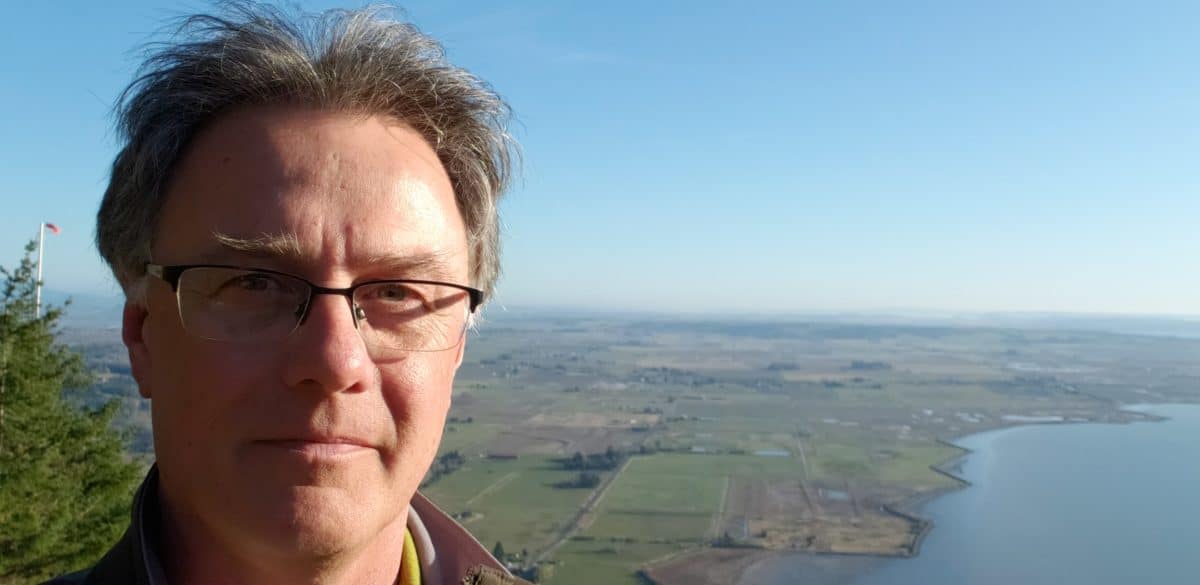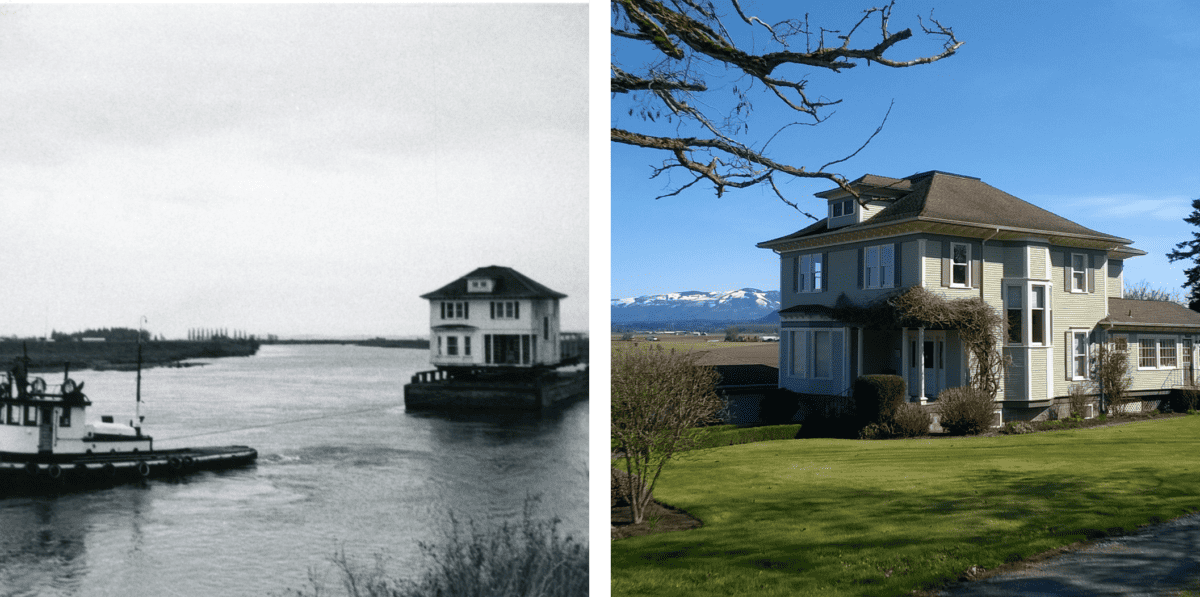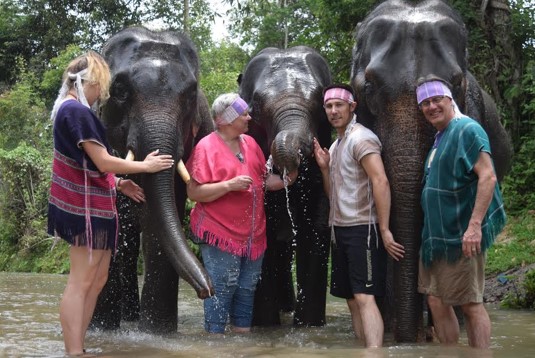PSC has more than 200 global employees all contributing to helping power a more sustainable world. Our employee spotlight segment offers a look at what our hardworking people are all about when they’re not serving our clients and each other at work. November’s spotlight is on North America Power Systems Consultant, Mark Prentice.

Mark Prentice, PSC North America Principal Consultant in SCADA/EMS
PSC: How would you describe your role at PSC?
Mark: When I joined PSC in 2013, I was filling a role derived from my prior role within R&D at Alstom T&D. That role was focused on helping our clients adopt the products that I previously developed while at Alstom. That included what is now GE AEMS SCADA, Source (EMS/SCADA Modeling), and ADMS. Over time that role has evolved to include Job Management, Test Leadership/Q.A., Project Planning, System Integration, and in 2020/2021 I helped author Technical Specifications for PSC NA Clients (one ADMS and one EMS).
I have worked in technical and business (Job Manager) roles on O.T. projects involving Alstom/G.E., Telvent/Schneider (GAS SCADA), OSISoft PI, and OSI ADMS/EMS technologies. In 2020, I obtained CISSP (CyberSecurity) Credentials… which I hope to use in billable contexts on future jobs. I like to think that I can contribute as-needed to most North American O.T. consulting space activities.
What’s the most interesting or most gratifying part of your job?
Mark: After a long time in an EMS R&D role, where I mostly heard complaints about the products, I wanted to work directly with clients to solve operational challenges and deliver high-value solutions. Therefore, finding the right way to efficiently help our clients successfully complete their projects remains very satisfying to me. I also highly value the variety of work that I do at PSC.
What is something your co-workers would be surprised to learn about you?

The 120-year-old Prentice house was moved by barge in 1978 (left) to its current location in the Skagit Valley of Washington State (right).
Mark: A few years ago my wife and I decided to escape the Seattle suburbs and moved into a 120-year-old Victorian house in a farming area (Skagit Valley) about halfway between Seattle and Vancouver BC. We have 4 goats, 14 chickens, and a dog. The old house is, of course, a large and slow improvement project. We are in discussions now with a family member about hosting a Farm-Oriented Wedding on our property.
Where did you grow up?
Mark: My family has deep historical roots in the Seattle area, going back to the city’s early days. My grandmother ran the family business – “Prentice Nursery Landscaping and Decorating Co.” – directly alongside Boeing Field in the 1950s-1960s. Boeing Field was the first and primary manufacturing area for Boeing aircraft. If you ever tour the Boeing Air Museum at Boeing Field, toss a rock a hundred meters to the north and you may hit our old property. After my father took over the business in the 1960s, I lived at that location until I was 15yo when we moved to a waterfront neighborhood about 5km west of the main Seattle Airport (Sea-Tac).
If you could live anywhere, where would it be and why?
Mark: I am strongly tied to the sea, which makes sense growing up in Seattle near the water. I now live in a great area where food is grown, the sea is nearby, and I can see the mountains from my house windows. I also became very fond of several locations I visited in Australia as part of my professional assignments. Melbourne and Sydney would definitely be on the shortlist of desirable locations for me.
What are your hobbies? What led you to them?
Mark: In addition to spending lots of time on improvements to our old house and rural property, my wife and I own an old(er) boat. It is a 15-minute drive to Puget Sound from where I live, so maintenance and outings on the boat during good summer weather are a key component of my non-work time.
What is your proudest accomplishment?
Mark: Ignoring the accomplishments of my two children, I would have to list several… in no specific order.
- I was a slightly above mediocre College middle-distance Track and Field runner. I ran a couple of 1:52 800m races when I was in my early 20s.
- I took a meandering path to my degree in Electrical Engineering (University of Washington, 1992). Given the non-traditional path I took toward the degree, I’m proud of the destination I achieved.
- Professionally, I am proud of the success of the products I helped develop, release, and support while at ESCA/Cegelec/Alstom. I really enjoyed representing the state of those products and discussing needs with customers at the company User Group meetings.
What are you most looking forward to in the next five years?
Mark: My youngest child is in her final year of Nursing at the University of Portland (Oregon). After that, financial planning will get a lot easier. Assuming continued progress on the Covid front, I hope to resume international travel with my wife.
What’s your favorite vacation spot?

Mark and his family on vacation in Thailand.
Mark: Post-Covid, I would have to say the U.S. San Juan and Canadian Gulf Islands, in the protected sea to the west of Washington State and British Columbia. Pre-Covid, I would have to list various international destinations. I mostly enjoy discovering new places, cultures, and food rather than a specific place.
What’s a smell or sound you love? Why?
The smell of the sea. I could be on my own vessel or a commercial ferry. It is always a get-away for me when on the water.
What’s a smell or sound you hate? Why?
Mark: I live close to a periodically busy two-lane 100 kph speed limit road. Big diesel pickup trucks remain very popular in the U.S., especially in rural areas. I am not a fan of a big pickup shifting into passing gear on the straight stretch of road near our home.
Do you/have you done any volunteer or community service work? If yes, why/how is it important to you?
Mark: My son was in Scouting (Eagle rank, 2012). Community Service is a key part of that program, so we were routinely volunteering to support non-profit organizations. The Eagle projects were defined around improving public or non-profit situations. We improved picnic areas at a local city park for my son’s project, built an eagle rehabilitation enclosure at a Wildlife Sanctuary, add added new bulletin boards for youth soccer fields. After the projects, it was always a good feeling to say “I helped create that.”
